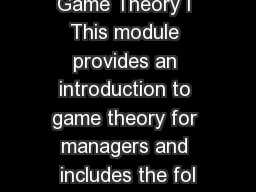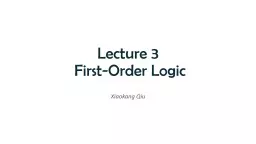PPT-Game Theory I This module provides an introduction to game theory for managers and includes
Author : karlyn-bohler | Published Date : 2018-09-26
Author Neil Bendle Marketing Metrics Reference Chapter 7 2014 Neil Bendle and Management by the Numbers Inc Game Theory studies competitive and cooperative interactions
Presentation Embed Code
Download Presentation
Download Presentation The PPT/PDF document "Game Theory I This module provides an in..." is the property of its rightful owner. Permission is granted to download and print the materials on this website for personal, non-commercial use only, and to display it on your personal computer provided you do not modify the materials and that you retain all copyright notices contained in the materials. By downloading content from our website, you accept the terms of this agreement.
Game Theory I This module provides an introduction to game theory for managers and includes: Transcript
Download Rules Of Document
"Game Theory I This module provides an introduction to game theory for managers and includes"The content belongs to its owner. You may download and print it for personal use, without modification, and keep all copyright notices. By downloading, you agree to these terms.
Related Documents














![[Notes for managers]](https://thumbs.docslides.com/1067657/notes-for-managers.jpg)